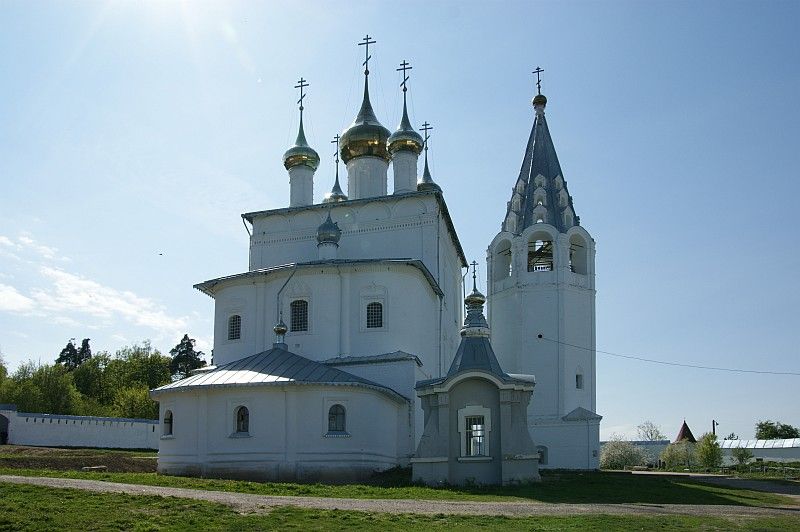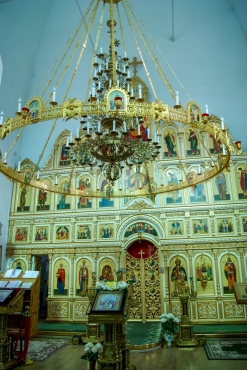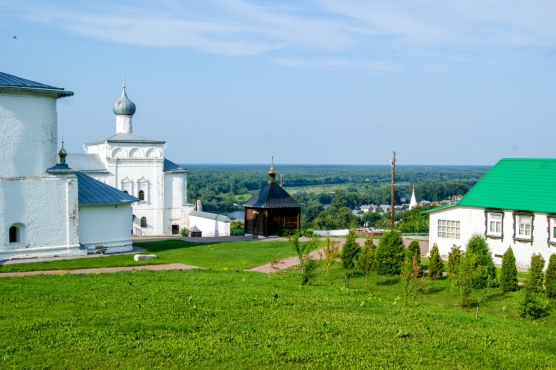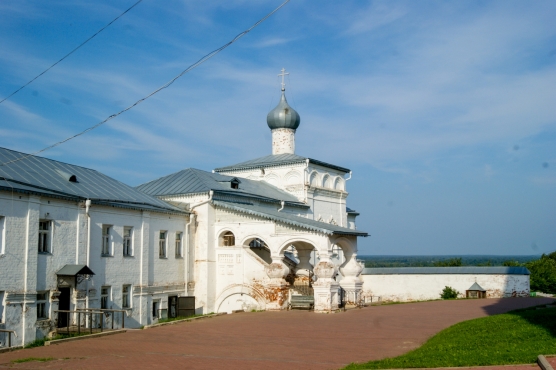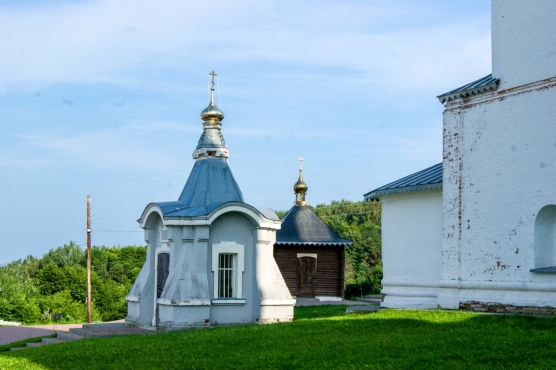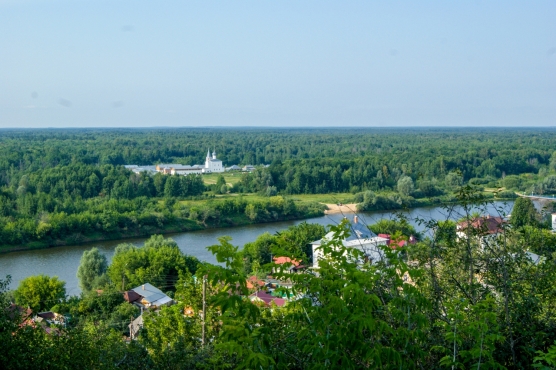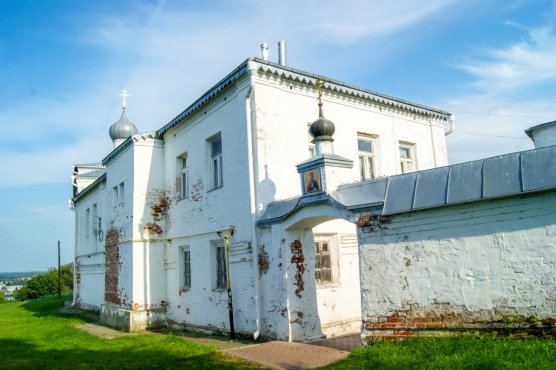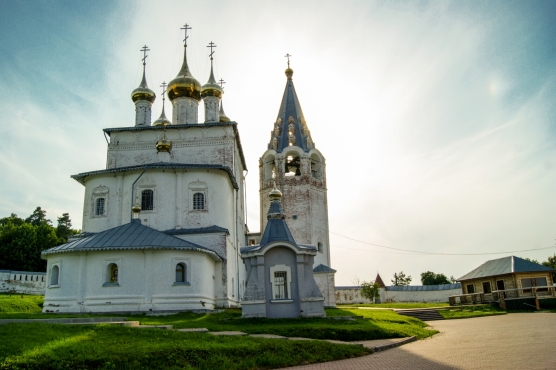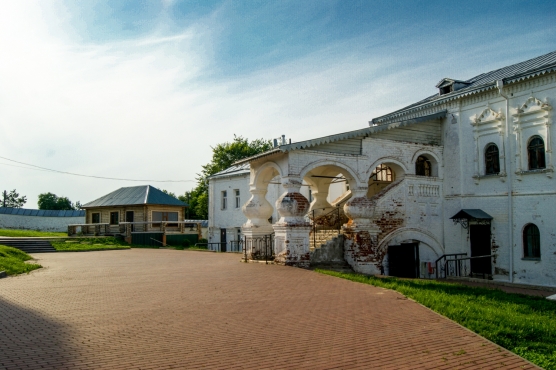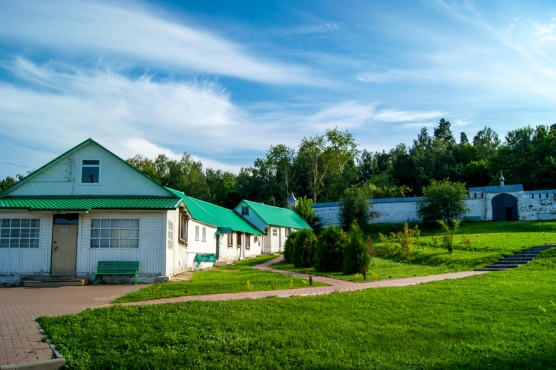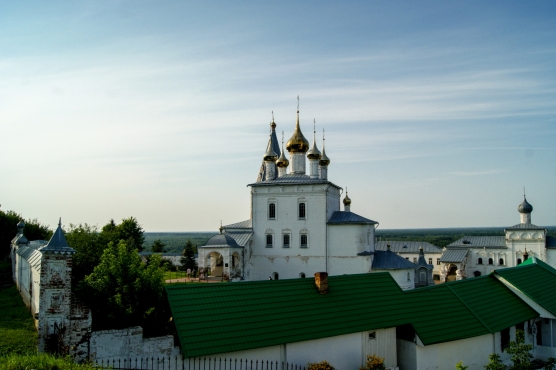Holy Trinity-St. Nicholas Monastery
- Address:
- Gorokhovets, Proletarskaya street, 12
- GPS:
- 56.20439155, 42.67343227
- Phones:
- +7 (49238) 2-12-73
St. Nicholas (Holy Trinity-St. Nicholas) Monastery is located on the high (150 m) bank of Klyazma, in the oldest part of Gorokhovets – "town place", where once, in the middle of the 12th century, there were town fortifications. The monastery was founded in the beginning of the 17th century, by decree of Tsar Mikhail Fedorovich Romanov, but burned to the ground and was resumed only in 1643. The construction of the main buildings of the St. Nicholas Monastery dates back to the last third of the 17th century, when stone structures appeared in Gorokhovets. This was facilitated by the introduction in 1667 in Russia of the "New Trade Charter", which opened to business people the scope for activity. Gorokhovets merchants, using the advantageous position of the town on the tract Moscow-Nizhny Novgorod with its noisy Makarevskaya fair, quickly became rich. And with them grew the town. Rich merchants made huge contributions to the construction of monasteries and churches, "atonement for great sins", as if competing among themselves, wanting to perpetuate their names and demonstrate their welfare. Monastic documents carefully recorded "benefactors", listing their numerous donations, however, they rarely mentioned the immediate creators of architectural masterpieces.
One of these temples was the Trinity Cathedral in the St. Nicholas Monastery, built with the money of the merchant Semyon Ershov. The two-story Trinity (Trinity- St. Nicholas) cathedral (1681-1689) dominates the territory of the monastery. On the first floor was the winter church of St. Nicholas, on the second – the Trinity summer church. The building of the cathedral, rectangular in plan, is completed with five domes, which, in comparison with the heavy massiveness of the temple, look light enough. The drums of the heads are deaf, adorned with columns intercepted by beads. The windows are decorated with platbands with a keeled and toothed completion. The staircase leads to the temple through a porch, which is strongly extended to the south. The porch had a tented roof and pillars decorated with grooves. The ledge of the porch in the ensemble of the cathedral is balanced by the tented bell-tower, protruding from the north. The bell-tower, in accordance with local architectural norms, had the shape of a long octagon on a short tetragon l and was built simultaneously with the temple. Almost deaf planes of the main octagonal part end with large arched openings.
In the northeast corner of the monastery is a two-story one-domed church of St. John the Ladder with a refectory (1710-1716). The church was distinguished by a large porch, which had a distinct secular character: with powerful supporting jug-shaped pillars, decorated with large grooves. A "posad man" Ivan Shiryaev donated money for the construction of the monastery refectory church.
Earlier, in 1689, with the money of his brother Grigory Shiryaev, the one-dome gate church of the Intercession of the Theotokos was built above the central entrance to the monastery. The divine service was performed once a year in it, on the patron saint's day. However, in the 1930s, the church was destroyed. A wooden chapel-monument is placed now on its foundation.
At the beginning of the 18th century, the monastery was surrounded by walls, and the abbot house and cells were built. In general, the outline of the buildings, walls and the whole appearance of the Trinity-St. Nicholas Monastery were organically integrated into the natural landscape and the unique architectural ensemble of Gorokhovets.
In the 1930s, the monastery was abolished, part of the buildings destroyed, the monks were repressed. Many relics of the monastery, according to legend, they managed to hide in the dungeons.
In the Soviet years, the children's home was located on the territory of the monastery, in the Trinity Church there was a storehouse for film and photo documents, and in the church of St. John the Ladder there was a hostel. Gradually architectural monuments of the 17th-18th centuries came to desolation.
In 1993, the monastery revived, and the temples were gradually restored. The Holy Trinity- St. Nicholas Monastery today provides charitable assistance to children's shelters and needy people. Those who suffer from drug addiction and alcoholism undergo rehabilitation here.
 Tourism portal of the
Tourism portal of the